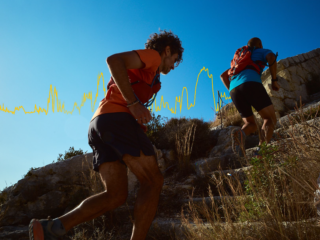The Year of New
2021’s going to change the world as we know it.
Now that the dust has settled on COVID-19, reaching the milestone of one year keeping on underneath pandemic restrictions is a strange kind of honour, like winning an Emmy award, or mastering the sourdough loaf on the first try. 2020 saw an unprecedented rise in conversations and connections – worldwide, people took to social media and talked about what they liked, what they didn’t like, what was happening in their lives, what wasn’t.
Some people did well during the pandemic. Others didn’t. Some people expected it to be over by the beginning of 2021.
Others knew it would last longer.
And some people thought it would go back to business as normal once routine was re-established, businesses opened up, schools went back to normal, and stuff just happened.
Others figured out early that this would change everything, including us.
Let’s talk about how.
Or, if you don’t have the time, let’s talk about how we can help you in 2021.
The Survivor Shift
Marketing is all about patterns, figuring out where the ripples in the water are coming from, and isolating what’s going to leave a lasting impact on behaviour versus what’s going to blip into society for a hot second, and then fade out like a late 90s computer screensaver. Small shifts happen yearly: these are the trends, things that influencers or celebrities do that catch hold with the public. They never last – it’s part of their nature.
Big shifts are rarer. Big shifts are a fundamental change, something that sinks into the foundations of society and warps it from inside out. Big shifts are printing presses and cloud technology, the internet and fast food.
Big shifts are the shifts caused by a pandemic.
COVID-19 didn’t just change the way that we lived; it changed the way we thought about how we lived. Consumers took one long hard look at themselves – at what was going on around them – and found that they didn’t like what they saw, either in themselves, in the brands they frequented, or the way things happened. They couldn’t change anything beyond themselves, so that’s what they did instead.
The 2021 consumer has had a reckoning, and what they brought into the new year is a way of reacting and engaging with content and media in ways so different from the norm that businesses who want to cater to those conversations need to reassess everything they’re doing from the ground up.
Consumers in 2021
Always online, fastidiously aware, and willing to shift allegiances: the new consumer doesn’t have the luxury of second or third chances, particularly with disingenuous brands.
This isn’t necessarily a new thing – we’ve written before about the changing face of consumerism – but with the pandemic shuttling everyone indoors and leaving them nothing but the Twitter account at their fingertips to engage with, people made their own connections, started their own conversations, and left big brands scrambling to understand what was happening.
Suddenly, people had time. They could engage with the brands they wanted to. They could spotlight the ones that acted in ways they didn’t agree with.
They praised the helpers.
They told their friends.
Brands that reacted the right way benefitted. The rest?
Bad news always travels faster than good, even when there’s an abundance of it.
Brand Trends in 2021
Slowing down due to the pandemic gave people the opportunity to keep an eye on what big corporations were doing, and to have online conversations that called them out. As COVID-19 continues to housebound people, brands need to step into a stronger role in consumer lives and conduct themselves with integrity, or risk getting torn apart on the internet.
We’ve seen brands involve themselves in activism before: Ben & Jerry’s ‘Imagine Whirled Peace’ with Colin Kaepernick is a recent example. However, in 2021, this is going to become the norm, not the exception: consumers are tired of brands who sit by and do nothing while they’re out protesting for their values and are actively seeking, and asking, brands what they’re doing to support causes close to their hearts. Brands need to speak. This is not the time for them to be silent.
Ed, our head of brand, says:
 “2020 was a year that called out brands that could have been called out. There were those operations that were directly impacted by the nature of the crisis – travel and tourism are a good example of this. There was nothing to separate the good from the bad from the ugly because all brands suffered the exact same plight. But then there were others that won the effect of a near-critical downturn.
“2020 was a year that called out brands that could have been called out. There were those operations that were directly impacted by the nature of the crisis – travel and tourism are a good example of this. There was nothing to separate the good from the bad from the ugly because all brands suffered the exact same plight. But then there were others that won the effect of a near-critical downturn.
Let’s take restaurants as an example. The ones that were propped up by fancy logos, dubious themes, or loud social media accounts suffered while the ones that were true to the fundamentals of their brand, those that kept fulfilling their promise to their clients, no matter how simple, experienced one of their best years ever. A crisis can winnow the wheat from the chaff and this is exactly what happened.
2021 and beyond will reinforce this. While a health and a humanitarian crisis was raging around us, an existential one was simmering within. You’ve heard people around you say that they have re-evaluated what matters to them. You might have had your own moments of introspection. What’s almost universal is an aversion to bullshit. This will be reflected in the brands that win 2021 and beyond.
There is an increasing demand for authenticity, with audiences quicker to call out brands for attempting deception. Shallow values and hollow promises can no longer cut it and as the crisis shows no signs of abating early, there will be a sustained desire for sensible spend, if not austerity. The brands that show sensitivity to the notion of providing value will emerge strong as they will be seen as our partners in a lifestyle we’re choosing rather than an attempt to make a buck out of our weakness.
And is this not the goal of every brand? Brands exist to forge long-term, value-based relationships. Being true itself, knowing why it exists, and abiding by a strong set of human values points at success for a brand during the best of times. During tough times it is the only way to flourish.”
Advertising Trends in 2021
During the peak of the pandemic, companies slowed down, by a lot. However, business didn’t stop just because the world did, and while there were companies who shut down shop and went to ground, there were equally as many companies who needed fast, mobile solutions to an unanticipated problem: how do you reach a consumer that isn’t leaving the house?
Advertising agencies worldwide had to speed up their processes to address a situation that no-one had planned for, find solutions to something that had never been anticipated, and work fast to make it happen. Companies had to learn fast, and produce work even faster, and this isn’t going to go away just because the calendar moved a year forward. We’re looking at the dawn of the hyperspeed advertising agency, capable of getting stuff done in record time.
People aren’t spending money.
The first department to go is advertising.
We’ve written about why you shouldn’t do that.
However, the unavoidable truth is that budgets have been slashed for advertising, especially for big productions. The name of the game now is fast, cheap, and powerful, and advertising agencies who can rise to the challenge of working within these parameters are poised to be the vanguard of the new age of in-medias-res marketing.
Rik, our CEO, says:
 “Advertising agencies have to pivot with the market, they have no choice. This change is happening on multiple fronts: naturally, agencies who worked with digitisation were positioned to make the best of the situation – and they succeeded, we saw some of our partner agencies actually increase their revenue dramatically in 2020 – while agencies who relied on media commission and the more traditional style of doing business had big problems.
“Advertising agencies have to pivot with the market, they have no choice. This change is happening on multiple fronts: naturally, agencies who worked with digitisation were positioned to make the best of the situation – and they succeeded, we saw some of our partner agencies actually increase their revenue dramatically in 2020 – while agencies who relied on media commission and the more traditional style of doing business had big problems.
Similarly, clients no longer wanted contracts in 2020: they wanted flexibility, and the ability to drop the relationship at any time, which is understandable. The world is volatile, and long-term financial commitments are a risk.
Finally, the client mentality itself shifted – suddenly, clients wanted big campaigns for penny prices, and agencies took a long time to see this shift. In the meantime, clients went and produced the low-budget content they wanted using freelancers or on their own. Agencies had to learn how to create low-budget content with freelance prices, but superior quality, and it was crucial for them to learn it fast, because companies no longer have the patience to wait for perfection. Agencies who understand how to fulfil these wishes – low on budget, high on quality – are going to make it. The others will struggle.
Fortunately, this is an excellent time to foster good relationships with your agency. It’s the worst time to be recruiting an in-house team, because you can’t plan for a future that you can’t predict, and agencies, as I mentioned earlier, are learning that they should create great content and excellent work more efficiently than they’ve ever done before.”
Social Media Trends in 2021
From Twitter’s Fleets to Instagram’s Reels, 2020 saw the uptick in short-form video, and this is likely to become a core tenet of marketing trends in 2021. Let’s be realistic – there’s a genuity to short-form video that static images find difficult to replicate, and with an increasingly critical consumer base, the only way to earn their trust is to put your money where your mouth is, and show them how your product works.
Furthermore, the video that’s making the biggest waves? Vertical video, made just for Instagram Stories and Tiktok.
Facebook and Google have had a hell of year: COVID-19 really brought their security and standards to question, and unfortunately for both companies, it turned out that their method of flagging false information left a lot to be desired. As a result, Facebook and Google doubled down on their misinformation measures in a bid to try and win back some of their lost authenticity. What does this mean for advertising? SEO and Facebook Ads just got a lot harder, especially for small businesses to tap into. We might see a few campaigns migrate solely to Instagram and Tiktok, though it’s unlikely that Facebook will be unseated as the social media for advertising any time soon.
Luke, who heads our digital marketing team, says:

“Facebook and good ole’ Zuck have been under fire for what feels like forever, but pressure has reached a peak in the last few months, and we’re likely to see the backlash of that in 2021. What I predict is that more and more restrictions will be placed on Facebook & Google as advertising platforms; we’ve seen some of this already with the new iOS 14 update, which sacrifices effectiveness for personal privacy, but with Malta specifically, I suspect that Facebook will still remain the main social media platform for business.
As for other social medias – the TikTok Ads platform has yet to land in Malta, but when it does (and yes, that’s when not if), it’s going to offer brands access to a new cohort of individuals who are likely missing from many other platforms. That said, brand advertising content will also be affected in terms of its format. Landscape video content is already all but gone – vertical is the new king, and every brand needs to adapt. In the past videographers would wince at anyone taking portrait video, but it’s now the absolute norm and cannot be ignored.
There’s been calls for harder regulations for Facebook, Google, and Amazon, to try and curb their monopolistic tendencies; while I don’t believe it’s going to happen in 2021, we might see a shake-up that would change the entire media landscape. It’s just too early to tell what that is yet.”
Spend Trends in 2021
As COVID-19 becomes just another facet of life, we’re expecting to see ad spending rally and increase, though not as massively as in previous years. Big events such as the Tokyo Olympics will especially help escalate global ad spend as consumers tune in to watch, and advertisers take advantage of the opportunity to speak to different audiences.
The shockwave of lockdown has shifted consumer priorities from ‘what shop has the best price’ to ‘what shop can I get this online from?’ It’s unlikely that e-commerce will reduce in importance in 2021; far from it, we’re predicting a further rise as the convenience of e-commerce attracts a greater number of people.
Lisa, our head of client services, says:
 “In general, companies are keeping the grunt work in-house and outsourcing the technical work to agencies, so spending the money specifically on those things that they know they can’t do well on their own.
“In general, companies are keeping the grunt work in-house and outsourcing the technical work to agencies, so spending the money specifically on those things that they know they can’t do well on their own.
There’s also a greater emphasis on quality rather than quantity in all areas, we’re seeing clients becoming a lot more conscious of targeting, there’s less talk of generic campaigns with no tangible reason behind them and more talk about specific targets that are results-focused.
We’ve obviously seen a shift to e-commerce and an increasing move to online vs outdoor ads; my prediction is that we’ll see even more of this as time goes by. We’ve also, quite naturally, seen a drop in activations, but with governments and health experts warning people that we’re not going to see herd immunity in 2021, we’re going to see more activations moving online, or in person but with clever twists to make them safer, as companies realise that they can’t just stop this part of their marketing.”
Design Trends in 2021
Nostalgia is at an all-time high: Netflix’s period series are among their most popular, and a little bit of old-fashioned is always a good thing for a new brand. However, even older brands are hopping on the bandwagon – now that they’ve got the time to sit down and breathe, brands are reinventing themselves and building new identities to take the place of old, time-worn ones. We’ve seen this with Burger King, and we’re likely going to see it over and over again as brands figure themselves out anew post-pandemic.
Colour and bold, splashy fonts are making a huge comeback this year, and with good reason: most people have been inside for a year or longer, and the feel-good vibes of the ‘70s can translate easily to a consumer base that’s frazzled, cynical, and desperate for a touch of optimism. While not all brands will go for the colourful approach, those that do will stand out from the pandemic doom and gloom.
Andrea, our Art Director, says:
 “I think we’re going to see two extremes, and that’s a very good thing. Colour, as always, will play a crucial role – but we might be looking at situations where we’ll see more delicate and considerate uses of colour. Some brands need to stand out and be loud again as they’ve been buried by what I would call the pandemic stand-outs. Loud doesn’t mean bright; it just means that some brands need to raise their voice and stand out to be heard.
“I think we’re going to see two extremes, and that’s a very good thing. Colour, as always, will play a crucial role – but we might be looking at situations where we’ll see more delicate and considerate uses of colour. Some brands need to stand out and be loud again as they’ve been buried by what I would call the pandemic stand-outs. Loud doesn’t mean bright; it just means that some brands need to raise their voice and stand out to be heard.
Brands have found themselves re-assessing and rebuilding themselves where needed, similar to what’s happened to many of us on a personal level. Reflection gives us a pure expression of our brand, and some brands may be rediscovering themselves throughout this era: look at Burger King. They rediscovered themselves, and the reaction has been overall positive and welcome.
The Burger King rebrand also gives us a glimpse at a design trend that’s been on the way, but has not yet reached its peak – expressive typography. We’ve seen a lot of individual designers and smaller brands take this on board, but we have yet to see one of the ‘titans’ adopt it to the full – Apple tried a little bit with the iPad Air identity, but not to that extent.
Mobility is, in my opinion, the industry that has adapted most in the last year. The steep rise in food delivery and online shopping demands that we keep fine-tuning ecologically viable packaging, to say the least. It’s also important that with the ever-increasing number of new mobility brands, each company should make sure that their identities are well defined and are also a true expression of what the company in question stands for. In other words, what makes Brand X different from Brand Y?”
Influencer Trends in 2021
2021’s claimed its first victim: that perfect, pretty Instagram grid is potentially a thing of yesterday as influencers globally embrace the #nofilter aesthetic. It tracks with everything else that happened during 2020 – people don’t want to see perfect and prettified, they want to see something authentic and real, and similar to big brands and corporations, they want to know that the people they’re following are genuine.
The quickest way to an audience is through their favourite instagrammer, and big brands are starting to realise that having an ongoing relationship with an influencer lends an authenticity and a continuity to their brands that is difficult to achieve in a one-off commission. What we’re predicting: micro and niche influencers will reap the benefits of brands seeking greater connections, while macro influencers might struggle to get a foothold due to a less-than-stellar newscycle in 2020.
Melissa, our head of marketing, says:
 “Influencers carry a big responsibility, which is in their names: they influence.
“Influencers carry a big responsibility, which is in their names: they influence.
And in this past year, we’ve seen how the lifestyle of the broadcasters can backfire. Their lives are at the tips of our fingers, and in just a few seconds we know what they’ve had for lunch, which workout they opted for at the gym, and what outfit of the day they picked.
Influencer Arielle Charnas left for a family vacation after testing positive for COVID-19. Kim K hosted a private island birthday party at a time where death cases were drastically rising in the US. Italian influencer Elisa De Panicis celebrated her 28th surrounded by friends while the infection was turning Italy into a red boot.
This is the first time, since the invention of the internet, that the world has come together needing the same things: compassion, understanding, a sense of togetherness. Linking to €1,000 necklaces to your stories and showcasing your stay at a beautiful 5* star hotel (regardless of all the restrictions one might be following), isn’t inspirational, on the contrary, it is seen as insensitive.
People are losing their job, losing loved ones, and losing their minds in the process of adapting to this new lifestyle – they aren’t after content that is unattainable, but rather, they are hungry for content that is relatable.
But it’s not all bad. We’ve seen a rise in nano and micro influencers who tackle mental health issues, who aim at informing rather than deceiving, and also bring a little entertainment and comedy from the safety of their sofas. Influencer marketing will never die, simply because it’s the form of marketing that has always been around.
What will change is the content that consumers are after, and that’s what’s going to make or break the big influencers. For example, we might see more of it now because, as a result of the lockdowns, people have turned to socializing online, so perhaps creating more connections with the “real” people and niche related people of the internet.”
Anything else?
2021 has just started.
There’s a lot that could happen over the course of the next 12 months that’ll make us look back on this blog post and think, ‘well, we got that wrong’. Trendwatching in marketing isn’t a one-and-done thing, and it’s not something that’s ever finished: you just learn to look at intervals, and see which way the wind is blowing. For now, this is everything we think is going to happen if COVID-19 remains a concern, if the vaccine doesn’t lead to herd immunity, and if people stay fundamentally people.
Advertising is still needed. Businesses still have to conduct business. People will still shop and talk online and talk about what they bought online.
The only thing we can try to do is help: spread better messages, make better choices, and tell better stories.




